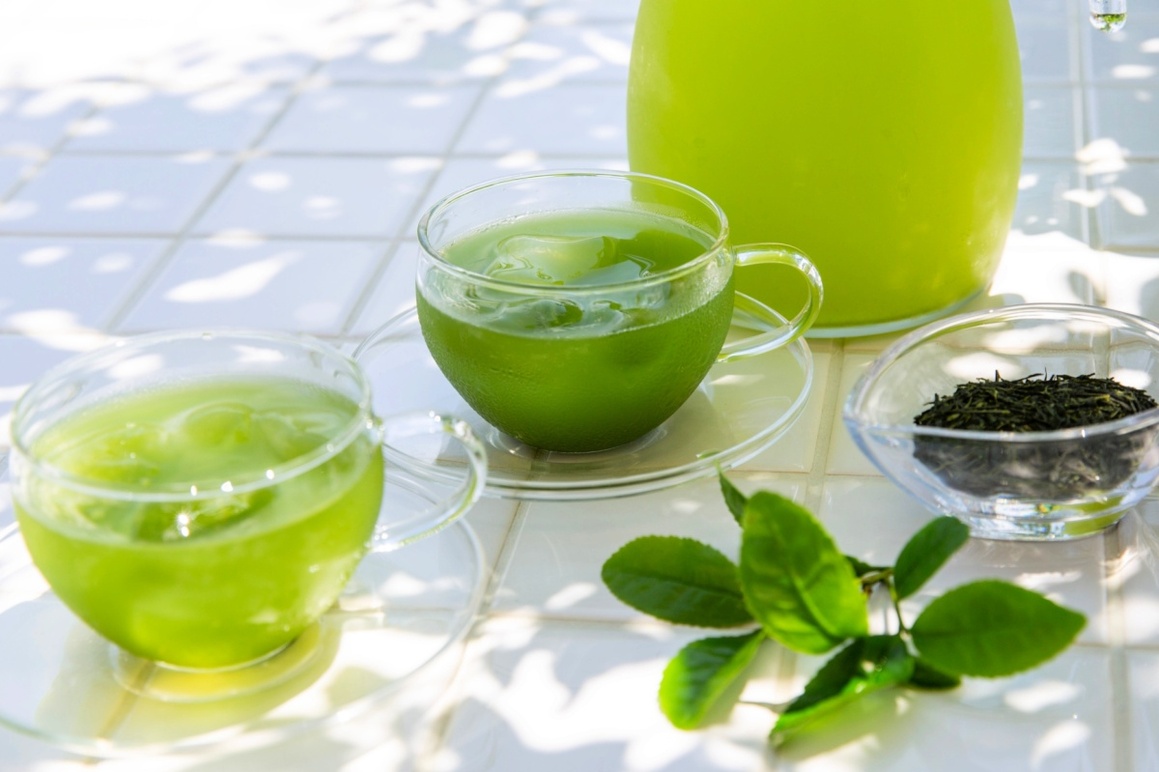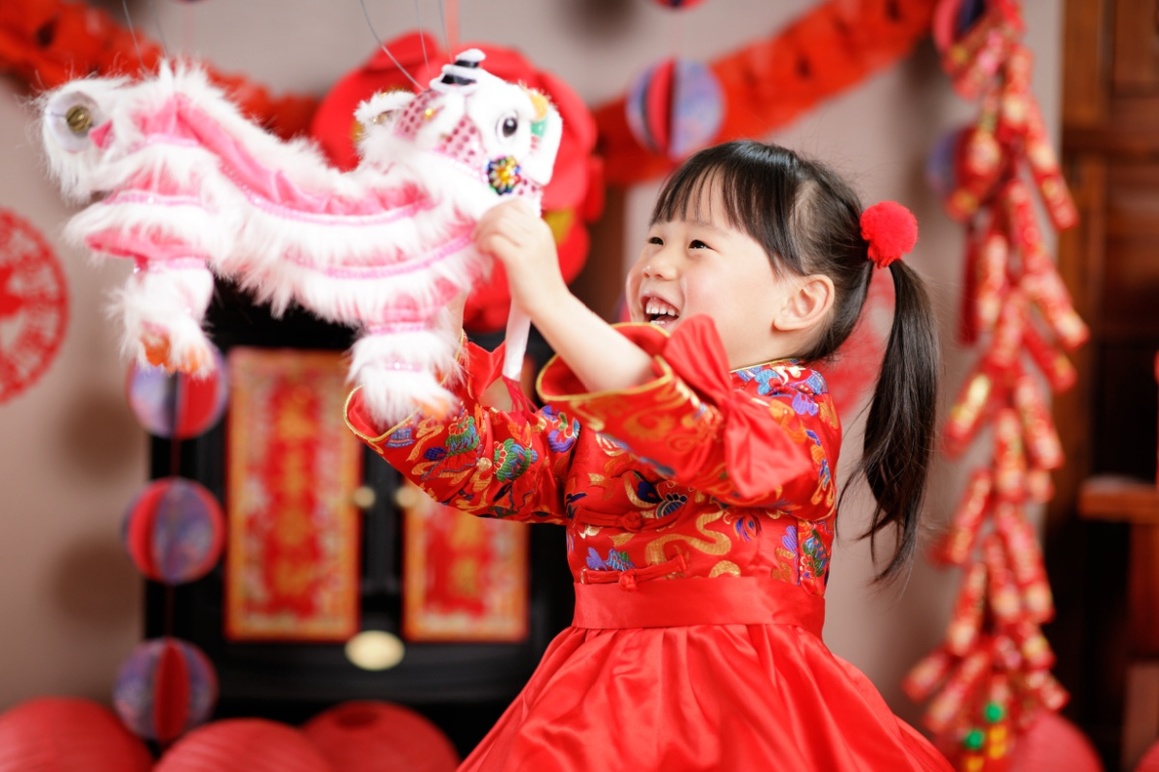Steamy Ginger Green Tea

Fun-Da-Mentals Kitchen Skills
- boil :
to cook a food in liquid heated to the point of gas bubbles and steam forming (boiling point is 212 F at sea level).
- steep :
to soak a food, like tea, in water or other liquid so as to bring out its flavor.
Equipment Checklist
Ingredients
Steamy Ginger Green Tea
- 1" piece fresh ginger, peeled and sliced
- 3 bags decaf green tea
- 1/2 C honey/sugar/agave
Instructions
Steamy Ginger Green Tea
add + boil + steep
To a saucepan, add 4 cups of water, sliced ginger, 3 bags of decaf green tea, and 1/2 cup sugar. Bring water to a bowl and stir to dissolve sweetener. Turn off heat and cover pot to let green tea and ginger steep for 5 to 10 minutes. Remove tea bags and ginger before pouring into mugs, and enjoy!

Hi! I’m Ginger!
"My name is Ginger, and I'm happy to make your acquaintance! You may have tasted me in lots of sweet foods and drinks, like gingerbread, ginger snap cookies, pumpkin pie, and ginger ale. But, I also add my unique flavor to savory dishes, like stir-fries and potstickers! If you use my fresh rhizome or root in a recipe, delicately peel my beige, papery skin (the back of a metal spoon works great!) and grate my juicy flesh into the food! I also come in a dried and ground form and as crystallized ginger. As a bonus, I might even make your tummy ache feel better!"
History
- Ginger is a native plant of India and China and is a common cooking spice used throughout the world.
- Ginger is one of the oldest plants used for medicine.
- Which spices do you think are most commonly found on kitchen tables around the world? If you said salt and pepper, you'd be right! It truly depends on where you are in the world. In the ninth century, Europeans placed powdered ginger on the table alongside salt and pepper.
- A long, long time ago, ginger was used to preserve food and keep it from getting rotten.
- Greeks used to eat ginger wrapped in bread to treat digestive problems. After a while, they added ginger to bread dough to create the first recipe for gingerbread!
- Ginger grows in many tropical countries, including the Caribbean islands. However, ginger from Jamaica is considered by many to be the best! Do you know where your ginger originated?
- Ginger is also grown in Florida, Hawaii, and along the eastern coast of Texas.
Anatomy & Etymology
- Related to cardamom and turmeric, the ginger plant is part of the Zingiberaceae or Ginger family. We use the "rhizome" part of the plant, which are underground stems. Sometimes we can eat the rhizome part of a plant, and sometimes we can't! For example, bamboo plants are rooted underground by rhizomes, but the rhizome is not the part of the plant we eat—instead, we eat the bamboo shoots that come up out of the ground. But we do eat the rhizomes of plants such as ginger, turmeric, and arrowroot!
- Rhizomes are also the storage compartment of the plant. What do rhizomes store? Starches, proteins, and other nutrients—that's why we eat this part of the plant (because it's nutritious!).
- Ginger Root is characterized by its aroma: it smells strong, sweet, and woodsy. Its skin is not something we eat—we peel the skin to reveal ginger's coarse, stringy, aromatic flesh.
- The ginger plant looks like a reed and has been used in the kitchen and as medicine for the past 5,000 years. A ginger plant can reach three to four feet tall.
- The word "ginger" comes from late Old English "gingifer," from medieval Latin "gingiber," from Greek "zingiberis," and from Pali, a Middle Indo-Aryan language "siṅgivera."
How to Pick, Buy, & Eat
- Fresh ginger is available year-round, where you can find it in the grocery store produce section.
- When selecting fresh ginger, choose robust, firm roots that feel heavy, and have a spicy fragrance and smooth skin.
- Ginger root length is a sign of age, and mature rhizomes will be spicier and more fibrous than younger roots.
- Ginger should not be cracked or withered—these are signs of aged ginger past its prime.
- To store ginger root, wrap it in a paper towel or plastic wrap or put it in a plastic bag before placing it in the refrigerator for two to three weeks. You can also freeze it for up to three months.
- According to many chefs and cooks, fresh ginger is best and can be added to sauces, soups, and stews. Dried and powdered ginger has a more spicy, intense flavor and is often used in baked desserts like gingerbread, gingersnaps, and ginger cake.
- Ginger can be sliced, minced, grated, or left whole to steep in recipes (minced ginger has the most intense flavor). It can also be dried, pickled, crystallized, candied, or preserved.
- Ginger tastes sweet, spicy, and pungent and increases flavor in a range of dishes, from stir-fried beef or tofu to ginger tea.
Nutrition
- Ginger continues to be used to treat nausea and to prevent seasickness.
- Ginger may also have anti-inflammatory properties and increase digestive function.
- Despite its natural properties, any medicinal use of ginger should be discussed with a doctor. Limiting the amount you take will help avoid heartburn. It may also interfere with anticoagulant medicine.
History of Green Tea!

- Tea originated in China thousands of years ago. Lu Yu, a Chinese tea master and writer (733–804 CE), wrote about growing, making, and drinking tea in his book The Classic of Tea. In the Book of Tea, Zen priest Myōan Eisai wrote in 1211 about growing and processing green tea and its effect on five vital organs.
- In his book Green with Milk and Sugar: When Japan Filled America's Teacups, Robert Hellyer, a history professor at Wake Forest University in North Carolina, says colonial Americans in the late 18th century began drinking green tea imported by the British East India Company. In the 19th century, Japanese tea traders supplied the United States with tea, and Hellyer says Midwesterners were drinking the most green tea in the US.
- Green tea is made from the same evergreen plant's leaves used for black and white teas: Camellia sinensis. The difference between the teas is the oxidation process they go through.
- Green tea is partially oxidized due to being treated with steam after harvesting, allowing the leaves to stay green. Black tea is fully oxidized, turning the leaves brown-black. White tea is unprocessed, or oxidation is interrupted sooner than green tea leaves before the young leaves are dried. White tea gets its name from the silvery hairs of the unopened buds of the plant that may still be present before drying.
- Matcha is bright green, finely powdered green tea leaves. Matcha is added to hot water to make tea. It tastes more intense than typical green tea, with an umami flavor (pleasant and savory). It is also described as having an earthy, grassy, and slightly bitter taste.
- An 8-ounce cup of green tea has an average of 35 milligrams of caffeine. A cup of black tea has an average of 55 milligrams.
Let's Learn About China!

- China's official name is The People's Republic of China. It became a republic in 1912; however, the first Chinese dynasty appeared around 2100 BCE. China is one of the largest countries in the world, and it has the most people!
- The official language of China is Mandarin. However, various dialects are spoken in different regions of the country. For example, in Shanghai, they speak Shanghainese.
- China is around the same size as the continental United States but only has one official time zone. The continental US has four.
- China's capital city is Beijing, while the most populated city is Shanghai.
- The Great Wall in China is the largest man-made construction on Earth, stretching an incredible 5,500 miles. Its builders used mortar that included sticky rice to bind the Great Wall's stones!
- China's land is diverse, with high mountains, low coastal lands, deserts, and damp tropical areas. Just like the United States!
- The Chinese are known for their papermaking, porcelain, and silk cloth. In addition to paper, they also invented the compass during the Han dynasty (202 BCE to 220 CE), woodblock printing in the Tang dynasty (by 7th century), gunpowder in the Tang dynasty (9th century), and movable type made of porcelain (for printing) between 1039 and 1048 CE, during the Song dynasty.
- Chinese cuisine varies by region. Climate, local agriculture, ethnic and class backgrounds, and outside influences all contribute to China's food diversity. There are eight major regional Chinese cuisines: Anhui, Cantonese, Fujian, Hunan, Jiangsu, Shandong, Szechuan, and Zhejiang.
- Wheat is farmed in northern China, so noodles and other foods made from wheat are consumed more in the North. On the other hand, rice is cultivated in southern China; therefore, rice is a staple in the South.
- Tea has long been part of Chinese culture across all parts of society. China was the first country to grow and drink tea and, today, it exports the most green tea worldwide.
What's It Like to Be a Kid in China?
- School success is greatly emphasized in China. Chinese kids go to school five days a week (six days before 1995), and their school day runs from 7:30 or 8 am until 4 or 5 pm. After school, they might do homework for three hours.
- In primary school, kids learn the Chinese language, which is made up of about 7,000 characters, not letters. The characters represent words. By the time they finish primary school, they will have learned about 4,000 characters. They will also learn a foreign language, especially English.
- Kids may not have aunts, uncles, or cousins because, at one time, the Chinese government allowed couples to have just one child due to the high population. That later changed to two, and in May 2021, the policy changed again to allow three kids, so now a child may have a sibling or two.
- Some of the holidays that kids celebrate with their families are Chinese New Year, the Dragon Boat Festival, and National Day. National Day is celebrated with fireworks and parades to commemorate the formal proclamation of the People's Republic of China on October 1, 1949.
- Kids enjoy playing ping pong, basketball, volleyball, and badminton. They also play video games and ride their bikes.
- Rice and noodles are staples, and kids may eat these at every meal. They'll eat their food using chopsticks, not forks!




